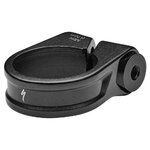I would like to average 20 to 25mph on a 105 mile ride. I would return on the same route the next day. I am willing to accept 15 to 20mph. I expect to run out of battery power.EVGO is for cars, either around 400 VDC or 240 VAC are used. If you look at the connectors, they are almost the size of the range extender battery. So an adapter will be at least as bulky as well. Even if an adapter were available, who wants to stick around for hours guarding their thousands of dollars bike waiting for it to charge? If you do plan to take a trip that exceeds the built in as well as a couple of range extenders - you are talking about carrying the SL charger with you - it's not tiny but it will be easier to find an available AC outlet. Still have the problem of securing the bike while it charges. If travelling with a range extender and on the go charging is needed- probably worthwhile to invest in the Y charging cable so you could charge both the internal and range extender at the same time.
My idea is to push myself and the bike as hard as possible for the 50 miles from Denver to Greely. Rest for two hours in Greely. Recharge battery. Repeat the same from Greely to Fort Collins.
